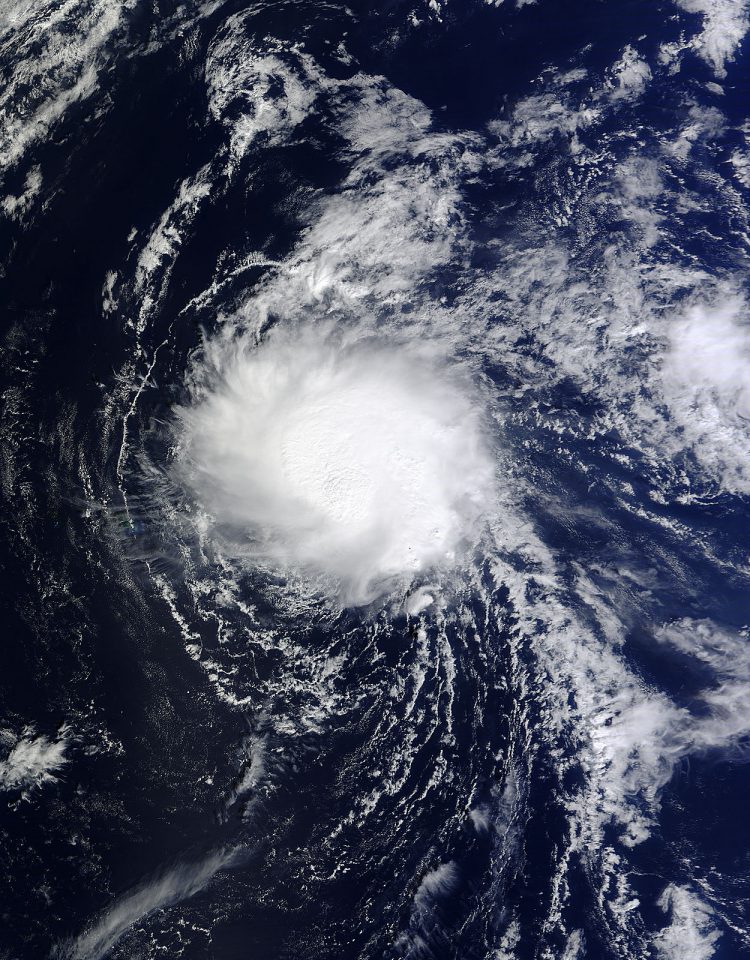NASA's Terra Satellite Shows a More Organized Tropical Storm Ana

NASA's Terra satellite passed over Tropical Storm Ana on Oct. 22 at 22:10 UTC (6:10 p.m. EDT) and saw that wind shear had relaxed. Image Credit: NASA Goddard MODIS Rapid Response Team
Ana appeared more rounded on imagery from NASA's Terra satellite as thunderstorms again circled the low-level center.
NASA's Terra satellite passed over Ana on Oct. 22 at 22:10 UTC (6:10 p.m. EDT). The MODIS instrument aboard Terra captured a visible image of the storm that showed clouds and showers were no longer being blown northeast of the center from southwesterly wind shear, as they had in the last couple of days.
The wind shear has weakened, which allowing for the showers and thunderstorms to redevelop around the center of the storm.
On Oct. 24, Ana was strengthening and moving northwest while crossing the northwest Hawaiian Islands east of Maro Reef.
A Tropical Storm Warning is in effect for portions of the Papahanaumokuakea Marine National Monument, from French Frigate Shoals to Lisianski.
At 8 a.m. (2 a.m. HST/1200 UTC) the center of Tropical Storm Ana was located near latitude 26.0 north and longitude 168.6 west. Ana was moving toward the northwest near 12 mph (19 kph) and this motion is expected to become more northerly through early Friday, then northeasterly through early Saturday, Oct. 25. Maximum sustained winds were near 50 mph (80 kph).
NOAA's Central Pacific Hurricane Center expects Ana to continue strengthening through early Saturday.
Rob Gutro
NASA's Goddard Space Flight Center
Media Contact
All latest news from the category: Earth Sciences
Earth Sciences (also referred to as Geosciences), which deals with basic issues surrounding our planet, plays a vital role in the area of energy and raw materials supply.
Earth Sciences comprises subjects such as geology, geography, geological informatics, paleontology, mineralogy, petrography, crystallography, geophysics, geodesy, glaciology, cartography, photogrammetry, meteorology and seismology, early-warning systems, earthquake research and polar research.
Newest articles

Machine learning algorithm reveals long-theorized glass phase in crystal
Scientists have found evidence of an elusive, glassy phase of matter that emerges when a crystal’s perfect internal pattern is disrupted. X-ray technology and machine learning converge to shed light…

Mapping plant functional diversity from space
HKU ecologists revolutionize ecosystem monitoring with novel field-satellite integration. An international team of researchers, led by Professor Jin WU from the School of Biological Sciences at The University of Hong…

Inverters with constant full load capability
…enable an increase in the performance of electric drives. Overheating components significantly limit the performance of drivetrains in electric vehicles. Inverters in particular are subject to a high thermal load,…





















